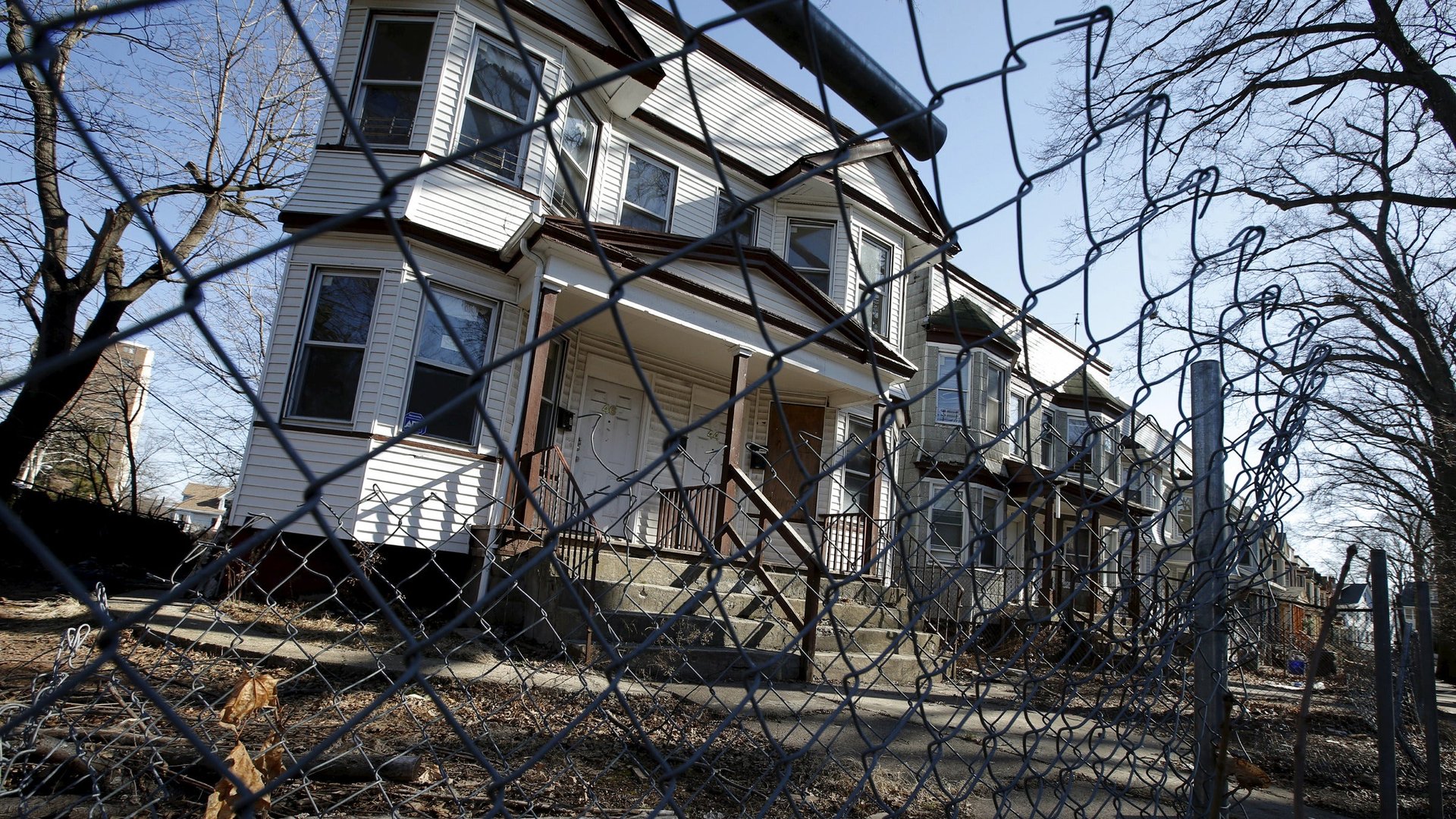Happy holidays! The US government is taking a two-week break from evictions
American homeowners who have fallen behind on their mortgage payments will get a small break from the government this holiday season: They won’t be evicted until after the new year.


American homeowners who have fallen behind on their mortgage payments will get a small break from the government this holiday season: They won’t be evicted until after the new year.
The Federal National Mortgage Association, better known as Fannie Mae, which is operated by the federal government, said it will not evict homeowners between Dec. 19, 2016, and Jan. 2, 2017, though legal proceedings may continue. Fannie Mae declined to say how many families the hiatus would affect.
Since the housing crisis began in 2007, the US government has stood behind the mortgage market, rushing in as banks rushed out. In 2008, it nationalized the two largest holders of mortgage loans, Fannie Mae and the Federal Home Loan Mortgage Corporation (Freddie Mac). Fannie and Freddie guarantee and securitize loans made by financial institutions to subsidize 30-year fixed rate mortgages, while the Government National Mortgage Association (Ginnie Mae) guarantees loans made by US agencies like the Veterans Housing Administration.
All told, today the US government stands behind $7 trillion in mortgages, a little less than half the country’s total outstanding mortgage loans. But that number, which includes loans dating back decades, actually under-represents the government’s role in new mortgage origination. In the first three quarters of 2016, government financial institutions backed $189 billion in mortgage loans, versus $149 billion for the private sector. And that’s an improvement—between the end of 2007 and the beginning of 2014, the private mortgage market didn’t show any net increase in home lending at all.
That’s why Fannie’s decision to halt evictions is likely to affect a large share of the US population currently in danger of foreclosure. Things have improved since 2007—according to the real estate firm Corelogic, the foreclosure rate in 2016 is just 2.6%, the lowest since before the crisis—but there are still a lot of Americans in trouble. There were 36,000 foreclosures this year through September, and the number of homes in foreclosure proceedings stands at 340,000 (down from 493,000 in 2015).
While Fannie’s holiday gesture may seem superficial, it is designed to attract attention to the enterprise’s attempts to modify loans that are in trouble.
“If you are in trouble or facing foreclosure, reach out to Fannie Mae or your servicer today to get help,” Joy Cianci, a Fannie Mae executive, said in a statement. “Options are available to avoid foreclosure, and we want to help pursue those options whenever possible.”
Convincing financial institutions and borrowers that they and the public at large will be better off if troubled loans are restructured rather than sent into default has been a challenge since the housing crisis began. And the lingering after-effects of the foreclosure crisis are part of the bundle of causes that led to Donald Trump’s election as US president.
The rebounding housing markets promise to define Trump’s term in office as well. His pick for Treasury secretary has spoken of taking on the challenge of returning Fannie Mae and Freddie Mac to private hands. Done successfully, it would be a welcome development. After all, few are happy with taxpayers on the hook for such a large chunk of private debt. But it also has the potential to be a huge giveaway to the financial sector, and a major threat to US homeownership rates.